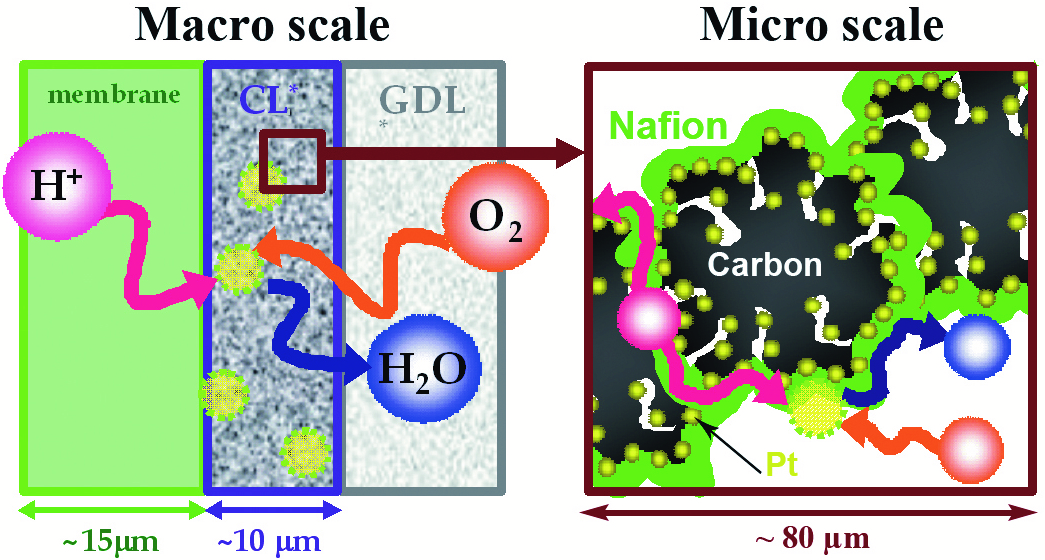In each electrode of a fuel cell, the catalytic layer (CL) is a multi-function compound of carbon grains containing nanoparticles of Pt and impregnated with a solution of Nafion
®. The porous carbon collects electrons and lets gases (O
2 and H
2) diffuse as they arrive from the diffusion layer (GDL). Pt catalyzes the electrochemical reactions. Nafion
® is the electrolyte that collects protons and disseminates them to (or from) the electrode/membrane interface. It takes the form of a 5 to 10 nm- thick film covering the carbon grains. We know very little about its properties. Yet everything happens precisely there: optimizing fuel cells currently involves optimizing membranes but also electrodes, and understanding the mass transfer.
Can we characterize the microstructure and proton transport in Nafion
® inside the electrode? The answer is yes! We have been able to perform this specific study by neutron scattering at the ILL and the LLB in Saclay. The structural organization, the swelling properties in water, and the proton dynamics within a 5 nm-thick film of Nafion
® are very close to those of the membranes, yet the membranes are 10000 times thicker. This study provides the first quantitative set of data on the molecular and nanometer scale, which will supply useful input for the current models of fuel cell design, still based on assumptions and not on measurements.
